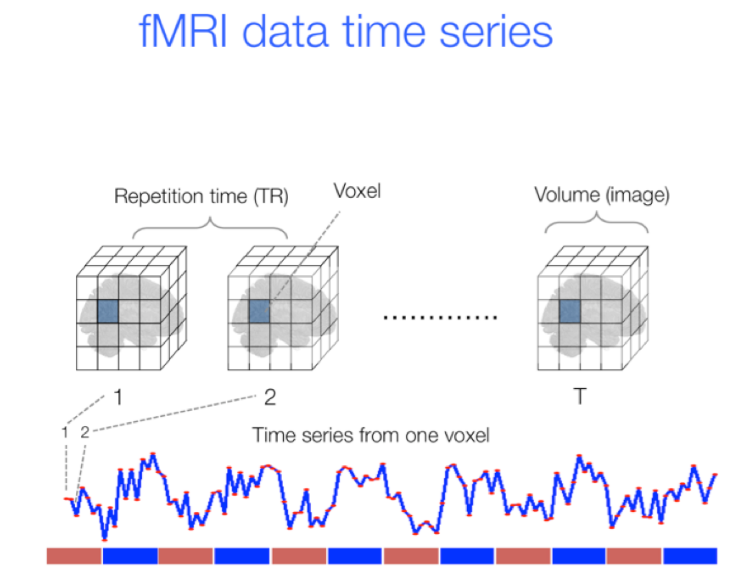1. Introduction¶
Different stimuli evoke different brain response, which enables an organism to respond to a particular stimulus in a particular way. Interesting question about the brain-stimuli relationship is: can the nature of the stimulus be predicted based on the evoked brain activity?
In this project, dynamic brain activity patterns of human subjects captured by fMRI in response to approaching and retreating threats is used to predict the stimulus class (approaching or retreating threat).
1.1. What is fMRI data?¶
Functional Magnetic Resonance Imaging (fMRI) is a timeseries data.
Like a movie of the brain.
Each frame is a 3D volume that represents a timepoint.
Unit of the 3D volume is a voxel (analogous to 2D image pixel).
Dimensions of a voxel is generally 3mm x 3mm x 3mm.
Rate at which fMRI data is collected is commonly referred to as repetition time (TR).
Commonly employed TR is 0.5-2 seconds per volume. TR = 1.25 seconds for the current study.

1.2. Typical fMRI setup¶
Participant views a visual stimuli on a projection screen via a mirror mounted to the scanner’s head coil.
Head coil measures the brain signal.

A) Participant in the fMRI scanner, B) Head coil with a mounted mirror, C) Full setup schematic.
